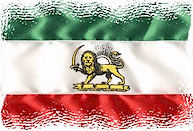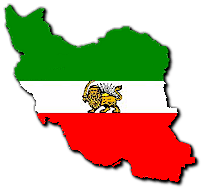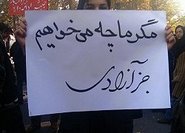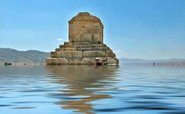Amir Taheri's new book to reshape the debate on the Iranian problem The story of Iran in the past three decades is a tragic tale best told by someone who has lived and felt it in his blood.
As Executive Editor-in-Chief of Kayhan, Iran's biggest daily newspaper, Amir Taheri was in a special ! position to observe the shaping of the forces that led to the Khomeinist seizure of power in 1979. One of Iran's leading intellectuals, Taheri was at the centre of a national debate over the country's future course- a debate that took place at universities, in the media, and within the framework of of cultural associations, spanning almost a whole decade. In " The Persian Night: Iran under the Khomeinist Revolution", Taheri offers and intelligent and critical narrative of his people's experience over the past three decades and offers some pointers for the future. As Taheri explains in this book, a majority of the Iranian intellectual elite forgot the rich diversity that was the fruit of generations of critical debate and speculation, and, succumbing to the temptation of power, helped the most reactionary wing of the Shiite clergy to dominate the revolutionary movement. "The Persian Night" shows that the system created by the Khomeinists is based on three lies expressed in the" triple oxymoron" of The Islamic Republic of Iran. However, the Khomeinist regime is neither Islamic nor republican. And , although located in Iran, it is not Iranian either. This has led to a "Jekyll-and-Hyde" situation in which two Irans exist side-by-side. Iran as an expression of the Islamism is an existential threat to both the Iranian nation and all those who reject obscurantism and religious threat. Iran as the expression of a rich culture and civilization, however, is a builder of civilizations and a force for peace in the Middle East. Khomeinism is using the people of Iran as hostages, hiding behind this "human shield" to carry out its dark schemes. Seen from the Western democracies' point of view, Iran, as the expression of the Iranian herita! ge, is a friend while Iran, as a vehicle for the projection of power by Khomeinism is an enemy. The book traces the ideological roots of Khomeinism to a number of extremist and terrorist movements within Islam alongside European fascist and communist movements that have influenced religious radicals in the Middle East for generations. However, "The Persian Night" is more than a simple history of Khomeinism. It also deconstructs the total structure of the regime to reveal its points of strength and weakness. More importantly, perhaps, "The Persian Night" offers the broad outline of policies that could help defeat Khomeinism as the latest manifestation of totalitarianism to develop ambitions of global conquest. In the process, the reader is also presented with pen portraits of the main actors in the Iranian drama and a broader depiction of their social and cultural background. Scheduled for publication on 10 November 2008, The Persian Night is already on pre-sale through more than two dozen outlets on the Internet, including Amazon, Borders, Barnes and Nobel and Waterston's. " Greek Orphan" pulped Taheri's first book, " The Greek Orphan: Can Islam Find A Place in the Modern World?" was one of the first books to be seized and destroyed by the Khomeinist regime in Tehran in 1979. A collection of articles some of which had been serialized in the mass circulation daily Kayhan newspaper, the book was scheduled for publication in March 1979 in time for the Iranian New Year. However, the seizure of power by the mullahs in February had changed everything in Iran and introduced a new system of censorship imposed by the clergy. On orders from the ayatollah, Taheri's name was put on a black list of authors that now includes hundreds of names. Directly written in English, Taheri's second book " Noosepepper: A History of the Persian Press in Turmoil" was commissioned and published by the International Press Institute in London in 1980. In 1982, Taheri published "What Is Wrong with Us?', a short and passionate book in Persian and addressed to Iranians who were already becoming disillusioned with the Islamist regime. The book sold thousands of copies in Iranian exile communities and found a vast readership inside Iran in samizdat form. In 1985, Taheri published "The Spirit of Allah", the first biography of Ayatollah Khomeini, which has been acknowledged as a classic of the genre by some critics. The book caused a storm of controversy in the Islamic Republic and was the subject of heated exchanges in the Islamic Consultative Assembly's Cultural Commission in Tehran. Two years later, Taheri scored another first by publishing "Holy Terror: Inside the World of Islamic Terrorism", a study of modern Islamist terror still regarded by some experts as a seminal introduction to a subject that has since become headline news throughout the world. Taheri's next book "Nest of Spies: America's Road to Disaster in Iran" was devoted to a study of Irano-American relations from their beginnings in the 18th century to the "Irangate" scandal. In it, Taheri challenged a number of received ideas that undermine a proper examination of a sensitive subject. Drawing on the mass of documents seized by Khomeinist students from the occupied US Embassy in Tehran, Taheri showed how successive administrations in Washington failed to develop a realistic policy towards a country that was to emerge as America's number-one source of concern in the Middle East. "The Cauldron: The Middle East Behind the Headlines" was Taheri's seventh book. Commissioned by the British publishers Century-Hutchinson, it offered a bird's-eye view of the region's many historic, political and cultural problems in a simple and accessible language. Another first, at least in English, was Taheri's "Crescent In A Red Sky", a study of Muslims in the Soviet Union offering an amazing amount of information and analysis on a subject that was virtually unknown to the broader international public at the time. Written in 1989, the book ends with a straight prediction of the imminent fall of the USSR described as "a sick empire". A portrait of the Shah Also directly written in English, Taheri's next book, "The Unknown Life of The Shah", completed his earlier biography of Khomeini, bringing together the two men who had marked Iran's contemporary history in very different ways. In 2003, Taheri published " L'Irak: Le dessous des cartes" (Iraq: What Is In The Cards?) his first book directly written in French to put the case for the liberation of the Iraqi people from Ba'athist tyranny. Co-authored with Patrick Wajsman, the book inspired much debate at a time that the French government under President Jacques Chirac was trying to prevent the toppling of Saddam Hussein. Taheri has also authored a number of long essays published in book form in Persian, English, French and Arabic, among other languages. These include a monograph on the Yazidi Kurdish tribes living in Iran, Turkey, Iraq and Syria, and another monograph on the Druze-like communities and sects across the Middle East and Central Asia. In a bid to introduce modern Persian poetry to wider audiences, Taheri translated into English over 100 poems by three contemporary Iranian poets in a collection bearing the title of "The Wounded Rose". Throughout the 1980s, Taheri was a tireless campaigner for the freedom of press across the globe. He represented IPI in a number of trials of journalists in Turkey, Algeria and Morocco, and helped young journalists from the Muslim world to secure training courses! in Europe. In 1990, he was one of 12 editors, mostly from Western Europe, who helped create the first free school of journalism in Moscow, then the capital of the USSR.


























 اخبار مربوط به زندانیان سیاسی و نقض حقوق بشر
اخبار مربوط به زندانیان سیاسی و نقض حقوق بشر

















 Tulips in Holland
Tulips in Holland












No comments:
Post a Comment